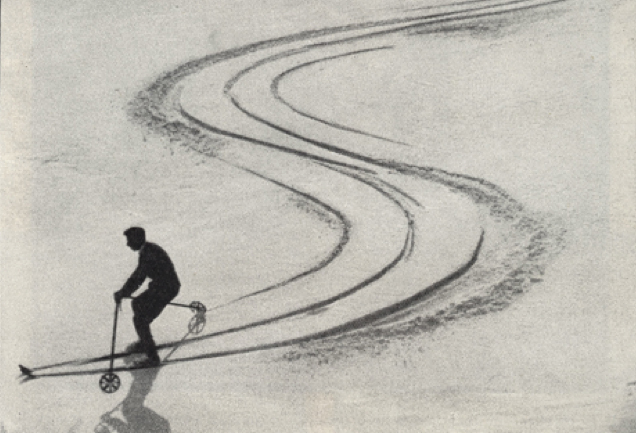The history of modern alpine skiing begins in the late 18th century, when durable wooden skis appeared in Norway, on which you could ski down the slopes of the mountains. At first, ordinary skis with semi-rigid bindings were used for descending from the mountains, the boot was attached to the skis by means of leather straps and metal braces.
In the 30s of the XX century, a metal edging was added in Austria, which made the skis more durable and easier to handle.
The next big design changes came after the advent of plastic. With skis covered with plastic underneath, a much higher speed was achieved than with simple wooden skis, which also entailed strengthening the construction of the skis, bindings and boots. Alpine skis have found their own version of bindings, with a rigidly fixed heel, and special boots.
Types of skis:
Carving is the generic name for modern skis designed for the “carving” (as opposed to “classic”) technique of parallel edging. They have been widely used since the end of the 20th century. Such skis, due to their shape, enter the turn more easily and can pass the arc without (or with a minimum) side slip. They differ significantly from the outdated, earlier alpine skis in that they are shorter, wider at the toe and heel, and have a significantly smaller radius. Skis are singled out for “fan-carving”, or radical carving, they have a very small radius and are designed for skiing with very steep arcs.

Freeride – wide or very wide freeride skis. Their appearance at the turn of the 20th and 21st centuries was, perhaps, a greater innovation than the “carving revolution” that took place at about the same time.
Racing- specialized sports carving skis designed for skiing on prepared slopes. They are divided into skis for slalom, giant slalom, super giant, downhill, ski cross. The characteristics of sports skis are standardized by the FIS rules.
slalom (SL) – narrow and short (for men 165cm) skis for a track with a side cut of a small radius (for men 13m)
giant slalom (GS) – Giant slalom skis with a sidecut radius of 35 m for men and 30 m for women, they are longer than slalom skis.
supergiant (SG). The skis are even longer and with a wider cut radius than the GS.
downhill (DH) – very long skis with a radius of more than 50 m, designed for high speeds
.
All-mountain / All-terrain / Allround – universal carving alpine skis designed for amateur skiing. They work satisfactorily in very different conditions of the slope, in each case yielding to specialized skis, which is the price of a compromise.
Freestyle – Skis for freestyle – skis of acrobatic exercises in specially prepared ski parks, suggest jumping from trampolines, acrobatics in a pipe, a mogul track (specially prepared bumps). Can be twin-tip (curved on both sides) for more safety when jumping and landing.
Ski boots are attached to boots with bindings consisting of a front head and heel, which can be installed either directly on the ski or on a platform that is fixed on the ski. On older models of skis, they are often used integrated ski-platform-binding systems, which facilitate the installation of the bindings, as well as provide the ability to flex the ski under the hard sole of the boot. An emergency brake (ski-stop) is located near the rear head, which prevents the ski from moving without a boot strapped into the mount.


